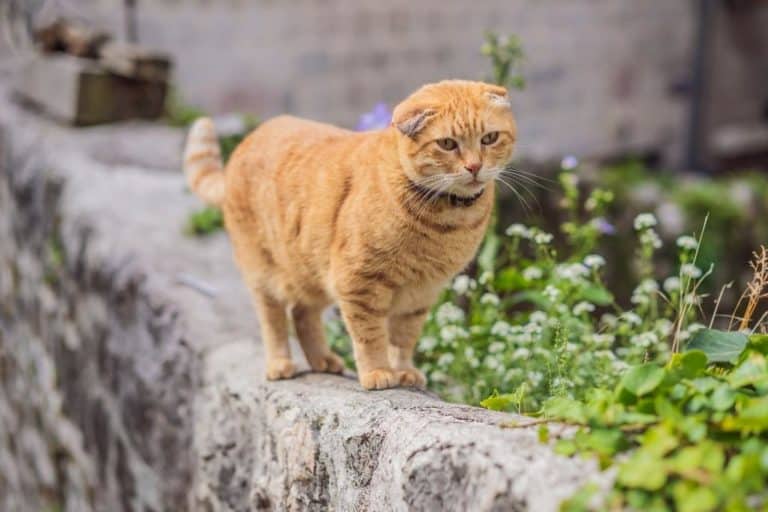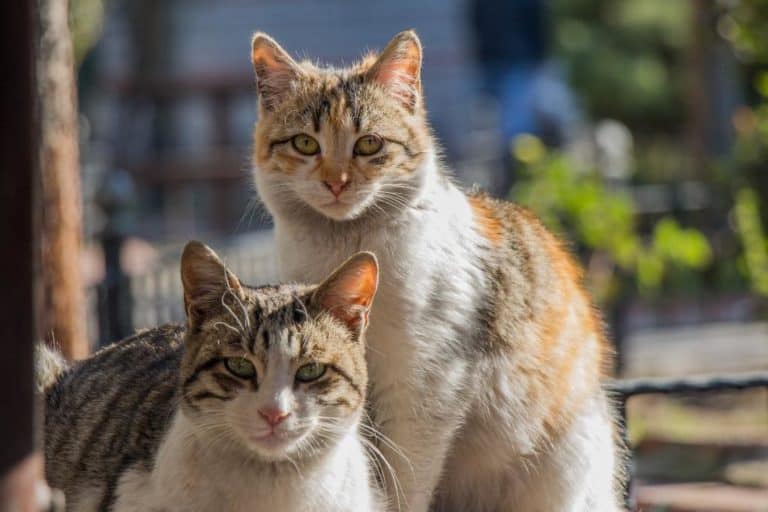16 Similarities Between Big Cats and Domestic Cats
Cats are a popular pet for many people. However, some people may not know that there is a difference between domestic cats and big cats.
Big cat species include lions, tigers, leopards, cheetahs, jaguars, and cougars.
Domestic cats are smaller than their wild counterparts, but they can still pose particular human risks. Domestic cats have the same physical and behavioral characteristics as big cats.
These similarities can lead to a false sense of security in people who may be unaware that a seemingly harmless house cat can cause severe injuries if it feels threatened or when it perceives that its territory is being invaded.
In terms of behavior, domestic cats are known for their independent nature, love of climbing, and hunting skills. All of these behaviors are also exhibited by big cats in the wild.
The physical characteristics of domestic cats that are most similar to big cats include their sharp claws, powerful jaws and teeth, and the ability to jump great heights. These physical features allow domestic and big cats to be highly efficient hunters.
However, there are also some differences between domestic cats and big cats.
For example, while big cat species are all “obligate carnivores,” meaning that they only eat meat, diets for this type of cat also vary depending on the location in which they live.
On the other hand, domestic cats are not obligate carnivores and can survive on a diet that includes both meat and plant-based proteins.
What do all Cats have in common? Top 16 Similarities
1) Domestic Cats and Big Cats are territorial.
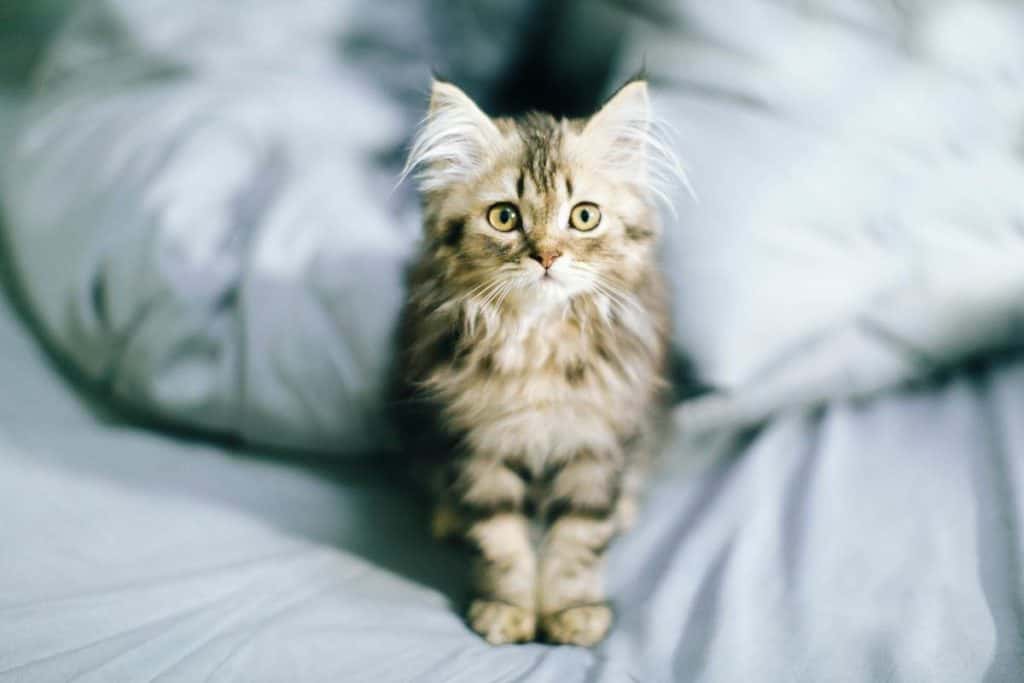
The most significant similarity between big cat species and domestics is territoriality; no matter how large or small the animal, it will defend its territory ferociously against intruders of any kind.
Domestic cats are known for being independent animals who love climbing, hunting skills, sharp claws, powerful jaws with teeth for efficient hunting tactics- all of these behaviors are also exhibited by big cats in the wild.
2) They are both predators.
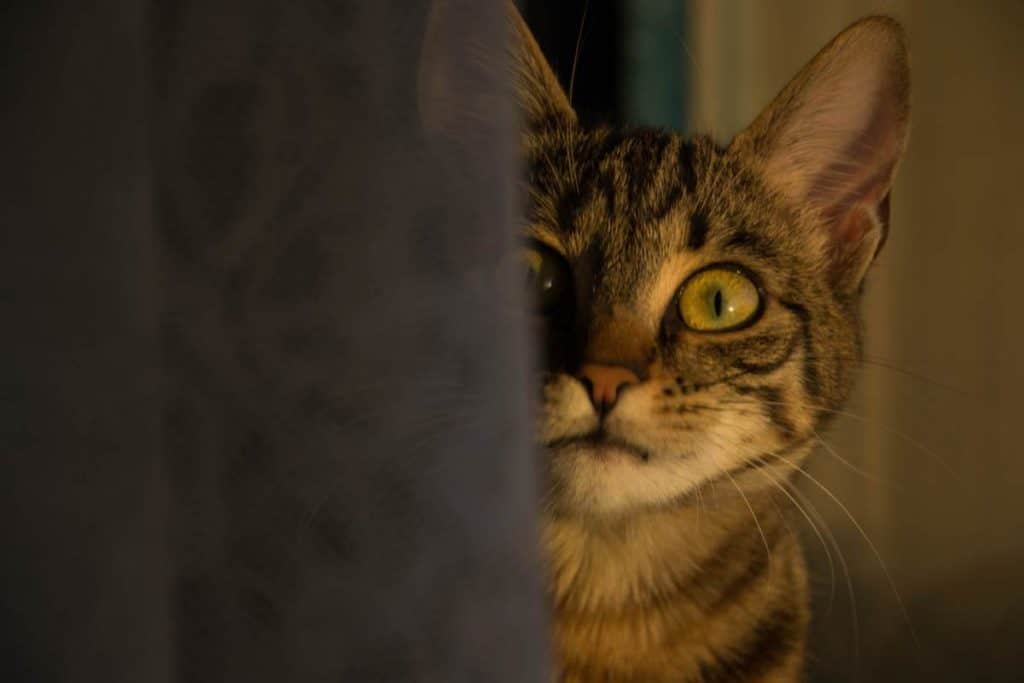
Most cats are carnivores, which means they eat flesh to survive. This includes big cats such as tigers and lions, who prey on other animals to survive.
As a result, felines tend to play with their prey before they actually kill it; they also have retractable claws (except lions) that help them grasp and kill their prey.
This makes them unique from other animals in the world who do not hunt for food but instead rely on plants or insects as sources of sustenance.
These animals include herbivores such as deer or cows, omnivores like bears or raccoons, and insectivores such as anteaters or bats.
The ability to hunt is one of the most essential weapons in evolution because it can allow an animal to obtain more nutrients than those found in plants and thus make it possible for them to survive in specific habitats.
3) They are both crepuscular.
Cats are most active at dusk and dawn. This is due to their hunting habits–big cats and domestic cats alike prefer to stalk their prey in the shadows.
It is not just big cats that are crepuscular; domestic cats can also be.
4) They have both binocular vision.
The word “binocular” means using both eyes together to create a single, three-dimensional image of the world around them.
When they shift their eyes from side to side or up and down, the object they are looking at does not change.
The brain combines the two images into one sharp picture with depth perception. This is how they can hunt prey in dim light without seeing themselves.
But suppose your cat has only one eye. In that case, she will see things differently from most other animals because her brain must combine information from just one eye instead of two, resulting in poorer vision and depth perception.
If you know your cat is blind in one eye, you can help her by keeping her environment consistent (exact location of furniture, litter box, food and water bowls, etc.) and making sure she always knows where she is. You may also want to get a harness and leash for walks.
Although Big Cats have a binocular vision just like Domestic cats and felines do, their eyes are set more towards the sides of their heads which gives them a more comprehensive peripheral range.
This is an advantage when they are stalking prey, as they can see movement from a much greater distance than cats with eyes set more centrally on their heads.
5) They have a strong sense of balance.
Cats can balance on narrow surfaces and in precarious positions, which comes in handy when hunting or stalking prey.
Cats have a great sense of balance and can even walk on narrow surfaces or in precarious positions.
Cats have a strong sense of balance and can even walk on narrow surfaces or in precarious positions.
They have sensitive whiskers that help determine where they will put their paws next.
When cats get more confident about walking, they will often do it with their tail up high so that the muscles around the spine stay loose and relaxed.
Cats also have fast reflexes, which help them catch prey from any angle it might be coming at them from while hunting!
Domestic cats also use this ability when stalking prey too. A cat’s balancing skills come in handy for many reasons. You never know when you might need to walk across a narrow surface or tightrope!
6) They have a good sense of smell.
Cats have a much better sense of smell than humans do. This helps them find food, identify other cats, and detect danger.
Cats have a much better sense of smell than humans do. This helps them find food, identify other cats, and detect danger.
Cats’ powerful sense of smell is caused by about 200 million olfactory receptors than the measly 5 million humans possess.
Their noses are also more sensitive to certain smells that we can’t even perceive at all, such as pheromones that help them find mates or detect prey from far away.
The feline nose has been described as “an instrument for analyzing smells rather than just an organ used for breathing.”
So what does this mean in practical terms?
Cats need less airflow through their nostrils because they rely on odor particles rather than air particles to help detect smells.
This enables them to keep their noses under the water while still breathing and drinking, as seen in this video of a pet cat dipping its paws into a fish tank and drawing up water:
Cats also have small muzzles and mouths compared to dogs which help them focus the airflow from their noses onto their sensitive olfactory receptors.
All of this means that cats can detect smells we can’t even imagine, and they use this sense to navigate their world and find food or danger.
7) They are good at hiding.
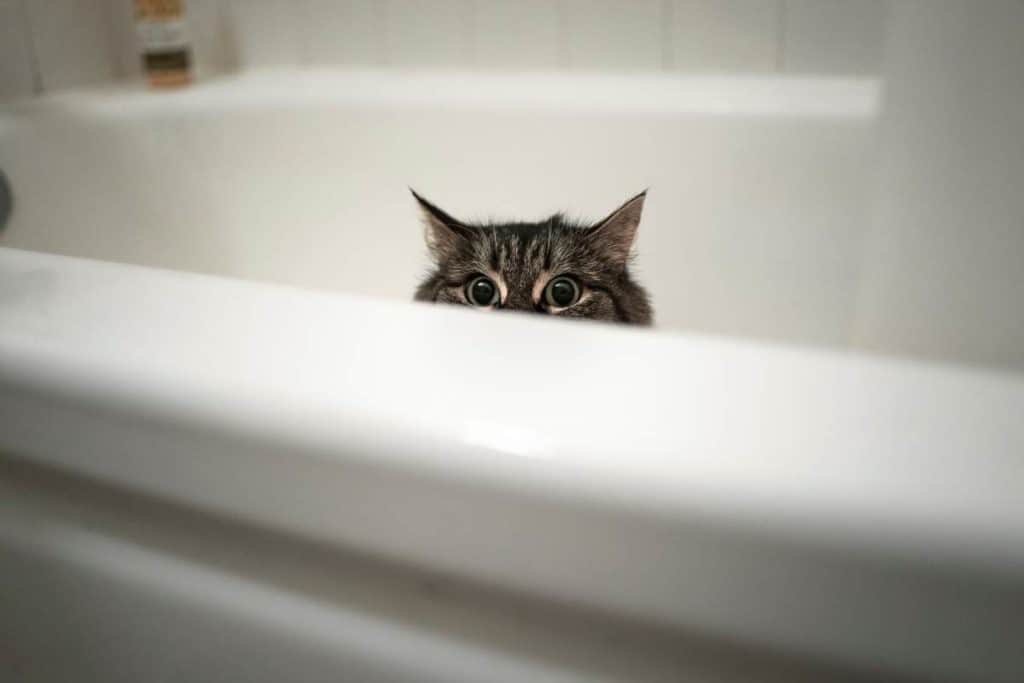
Since cats are predators, they have evolved to hide from their prey. This skill also comes in handy when they are trying to avoid danger.
A cat’s ability to hide results from its evolutionary past as a predator.
Cats’ natural ability to conceal from their prey has served them well throughout history, and it can now be used to hide from humans.
There are many similarities between domestic cats and big cats regarding this trait.
Cats can be found worldwide, but there are still some places where you might not expect them: namely on farms or in homes.
They often find themselves chased by dogs or other predators who want nothing more than a tasty meal in these areas.
They never know when we might be coming home either, so if they’re spotted outside of the house (which is rare), then it means someone needs an immediate bath.
8) They have a wide vocal range.
Domestic cats and big cats use a variety of vocalizations to communicate with each other. These sounds can express different emotions, including happiness, sadness, anger, and fear.
Cats use their voices to communicate with each other in various ways.
9) Can groom themselves often.
Cats groom themselves to keep their fur clean and healthy. They also do it to remove the dead hairs from their coats.
Cats groom themselves to keep their fur clean and healthy. They also do it to remove the dead hairs from their coats.
Grooming is a cat’s way of taking care of itself and keeping its coat in good condition.
It can be done by licking, scratching, or chewing at the hair on the cat’s body with its teeth and claws.
Cats will often rub up against people or objects they like, leaving behind a scent called “pheromones,” which advertises ownership and territory to other cats in the area.
10) They enjoy climbing trees.
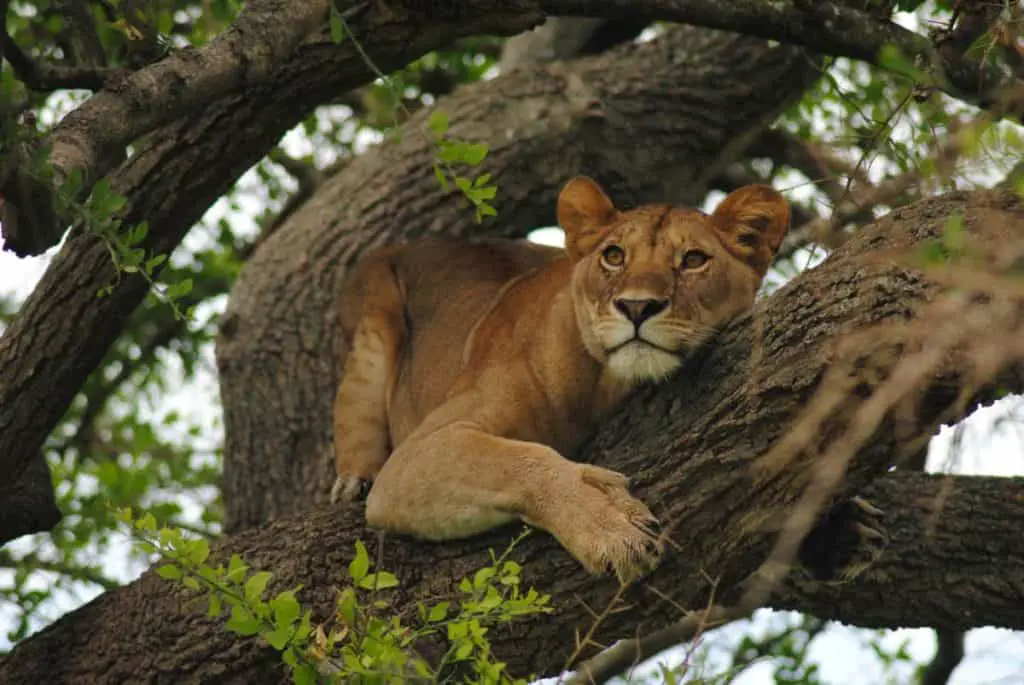
This is another behavior that cats have evolved to better hunt prey. They can better view their surroundings and stalk their prey more easily by climbing trees.
This behavior gives them an advantage when hunting prey by giving them a better view of their surroundings and the ability to stalk animals from above.
Domestic cats are often found in trees, but feral cats will also climb into any high place they can find to get a higher vantage point.
11) They love to play with string, feathers, and other dangling objects.
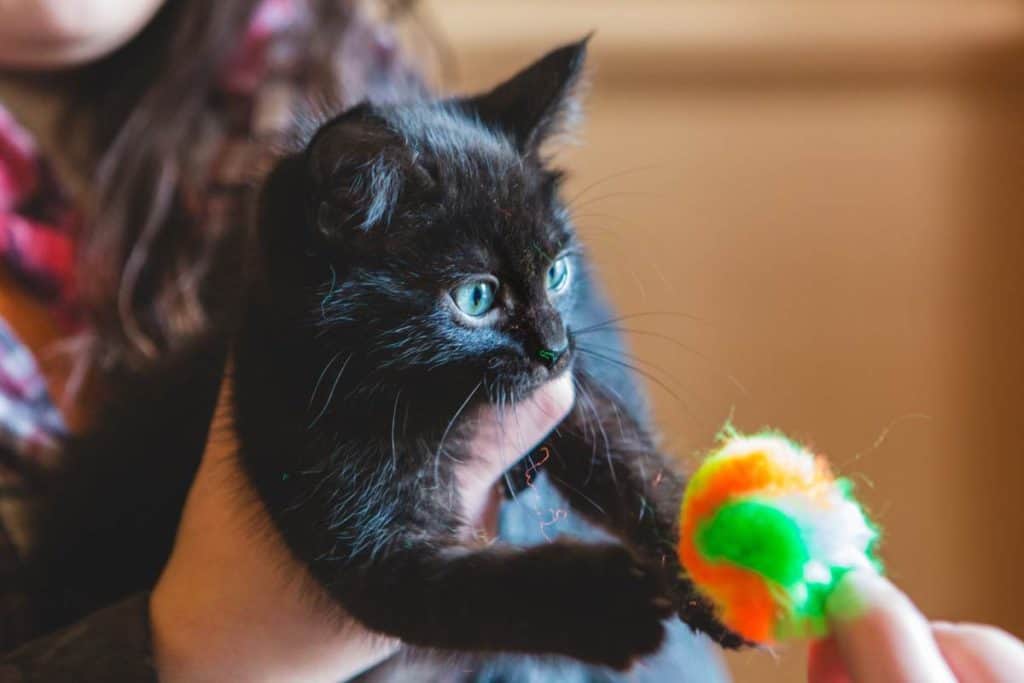
Cats have a natural instinct to hunt prey. This is why they love to play with string, feathers, and other dangling objects.
When a cat plays with a string or feather, she is simulating the act of catching prey.
12) They use their claws for hunting prey.
Cats have four types of claws:
- The retractable claw
- The dewclaw
- The half-retractable claw
- The fully retractable claw
Cats use their dewclaws and fully retractable claws when batting around a toy or playing with prey.
Cats are carnivores, which means they eat meat. A common misconception is that cats use their claws to clean themselves after using the litterbox.
Cats do not groom with their claws because it would cause them pain and damage to the skin on their paws, but rather by licking or rubbing against a scratching post or object.
Some people believe that declawing your cat will lead to less litter box usage and increased quality of life for the pet due to having its claws removed; however, this is untrue.
Declawing can cause long-term physical and emotional problems for your cat since the claw is both a tool used for hunting prey and protection from other animals who might want to track them!
The only time a cat’s claws should be trimmed is when they are sharp and could potentially scratch someone or something unintentionally.
If you are uncomfortable trimming your cat’s claws, take them to a veterinarian or professional groomer who can do it safely.
13) They can see in the dark.
Cats are nocturnal animals, meaning they spend most of their time sleeping during the day and hunting at night.
However, cats aren’t just lazy daytime sleepers! Cats use their tapetum lucidum to see better in the dark. This layer reflects light back into the cat’s eyes, making it easier for them to hunt prey without being seen or heard.
Their eyes also reflect green or yellow colors due to this layer, so many think they have an unusual eye color. Cats can even see colors like blue and ultraviolet because of these cells in their eyes!
14) They have strong maternal instincts.
Cats are known for their independence, which is why watching them with their kittens can be so fascinating.
The mother cat will hunt and bring back food to her hungry brood. The newborns will feed on milk from the mother’s breasts until they are strong enough to eat solid foods like mice or birds.
Cats have a potent maternal instinct that not only protects her children but allows her to teach them how to hunt themselves when they’re old enough. Big cats are no different.
Lionesses are known for the fierce protectiveness of their cubs.
They will fight off any animal near them, including other lions. Tiger mothers are also very protective of their cubs.
They will often move their cubs to a new location if they are in danger. These big cats are fiercely loyal to their young and will do anything to keep them safe.
Tigers are also renowned for their maternal instincts. Mother tigers often give birth in caves or on grassy slopes, where they can easily shield their cubs from the elements.
They will go on hunting trips until their cubs are old enough to start eating meat for themselves – usually around one month after birth.
Tigers nurture and protect their offspring for two years, at which point the young tigers learn to hunt and fend for themselves.
Lions are often regarded as “kings” of the animal kingdom, but there is more to discover about this species than its royal name.
Did you know that lionesses are the primary hunters in the pride? And that male lions actually do very little hunting?
15) They are solitary animals.
Cats are not social animals, and they prefer to live alone. This may be because cats are predators and need to hunt independently.
Cats are solitary animals. They prefer to live alone, which may be because they are predators and need to hunt independently.
Cats are not social animals, which is why you’ll often see them avoiding other cats in the animal shelter or yard where they live.
It’s also why it might be challenging for a cat owner to introduce another pet into their home; even if there was room for both animals, one would probably just get pushed out of the way by the other while trying to eat food or drink water from its bowl.
However, that doesn’t mean you should give up on your dream of having two pets! If you have enough time and patience with your new pet cat, he will eventually learn how to get along with other animals in the home.
It may just take a little bit longer than if the cat were raised with other cats from birth.
16) They don’t like to be touched unless they want to be.
Cats are sensitive animals and don’t appreciate being held or restrained. They prefer to interact with people when they’re in the mood for it. Otherwise, their independent nature takes over.
Every cat has a preference for how they want to interact with people. Some cats prefer to be held and petted, while others don’t like anything but the occasional head scratch on their favorite spot on the couch.
FAQ:
Are cats and big cats the same species?
Cats are not the same species as big cats.
Cats are smaller, less ferocious, and tamer than their wild counterparts. They evolved from a different ancestor who lived in Africa about 9 million years ago.
Big cats are descendants of the famous saber-toothed cat that roamed Asia about 10 million years ago.
They evolved into larger carnivores with better hunting skills to catch prey like antelope and deer on the African plains, where most of them live now.
Are cats more similar to lions or tigers?
Cats are more similar to lions than they are to tigers.
Technically, cats and tigers share a common ancestor in the genus Felis, but the two species have evolved a lot separately since then.
Cats descended from felines near water sources, while tigers descended from forest-dwelling cats. Lions live primarily on land, while most tigers live in habitats near water bodies.
These differences make it easier for scientists to tell which animal is depicted. When looking at various ancient artworks, cats would be easy to spot because of their distinctive whiskers or tail shape.
It’s not surprising that people often mistake one for the other!
Do big cats recognize domestic cats?
Big cats can recognize domestic cats.
This is because they have a sense of smell that is about 100 times stronger than ours, and they use this to help them find prey.
Cats can also see in near darkness, so their eyesight helps them locate their prey when hunting at night.
In addition to these senses, big cats have an excellent understanding of hearing which helps them locate potential prey from far away distances.
